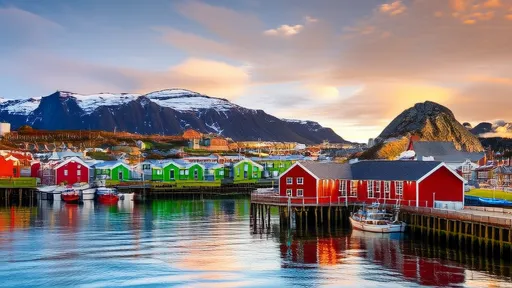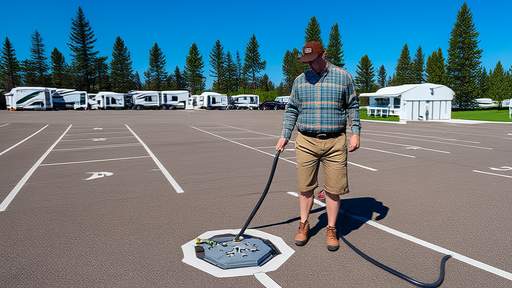The Antarctic winter is a formidable adversary, a relentless siege of darkness and cold that tests both human endurance and logistical planning to their absolute limits. For the scientists and support staff who brave this isolation at research stations across the continent, survival hinges on one critical document: the overwintering supply manifest. This meticulously curated inventory represents far more than a shopping list—it's a lifeline, a distillation of hard-won experience from decades of polar habitation.
At first glance, the sheer volume of supplies seems almost excessive—until one considers the impossibility of resupply for eight to nine months. Once the last summer flight departs in February or March, the winter crews are utterly on their own. Medical emergencies must be handled in situ, machinery repaired with available parts, and nutritional needs met without recourse to fresh provisions. The manifest reflects this reality with clinical precision, balancing calorie requirements against storage limitations, psychological needs against weight restrictions.
Food provisions dominate the inventory, but not in the form one might expect. Fresh produce appears only in limited quantities during the initial weeks, giving way to an arsenal of freeze-dried meals, canned goods, and bulk staples like flour and rice that can withstand extreme temperatures. The psychological impact of food during confinement cannot be overstated—many stations deliberately include luxury items like specialty chocolates or particular spice blends requested by team members, small comforts that assume outsized importance as the winter progresses. Some bases even maintain "emergency celebration rations" of champagne or aged whiskey, to be broken out for morale during particularly difficult stretches.
Medical supplies occupy an entire storage module at most stations, a miniature hospital capable of handling everything from dental emergencies to appendectomies. The manifests reveal fascinating adaptations to isolation—telemedicine equipment shares space with surgical kits, while psychotropic medications sit alongside splints and sutures. Modern stations increasingly include 3D printers capable of producing medical implements or replacement parts, a technological leap that has saved several expeditions from disaster when conventional supplies proved inadequate.
The engineering sections of these lists read like survivalist manifestos. Spare parts for generators assume theological importance, as do fuel stabilizers and specialized lubricants that won't freeze at -60°C. Every bolt, gasket, and circuit board must be accounted for, with redundancies built upon redundancies. Veteran winterers speak in hushed tones about "The Great McMurdo Generator Crisis of '92," when an overlooked O-ring nearly collapsed the entire station's power grid—a parable now taught to all supply officers.
Less tangible but equally vital are the psychological supports embedded in the manifests. Modern stations allocate significant space for virtual reality systems, extensive media libraries, and even musical instruments—one Chinese station famously shipped a grand piano at tremendous expense, considering the therapeutic value worth the logistical headache. The manifests also reveal cultural differences in coping mechanisms: some European stations prioritize sauna facilities, while South Korean expeditions include elaborate team-building exercise equipment. All share recognition that the mind requires as much careful provisioning as the body.
Environmental considerations have dramatically altered supply strategies in recent decades. Where early explorers might have burned whale oil indiscriminately, modern manifests emphasize renewable energy components—solar panels optimized for low-light conditions, wind turbines rated for polar vortices, and increasingly, experimental hydrogen fuel cells. Waste management systems have grown sophisticated enough that some stations now recycle over 70% of materials, with manifests carefully tracking enzyme treatments for composting and microbial solutions for water reclamation.
The creation of these manifests is a year-round process, with winter crews debriefing every shortcoming upon summer's return. A marginal note about insufficient coffee stores in a Russian station's 2007 log now translates to triple redundancy in caffeine supplies across all Antarctic programs. Such iterative improvements form a quiet testament to human adaptability—each line item representing someone, somewhere, deciding "never again" after enduring preventable hardship. As climate change alters Antarctic logistics—opening some shipping routes while intensifying storms—these living documents continue evolving, ensuring that those who winter at the bottom of the world are as prepared as humanity's collective experience can make them.
Ultimately, the overwintering manifest serves as both practical document and philosophical statement. In its exhaustive accounting of pasta varieties and spare lithium batteries, one detects an unshakable commitment to knowledge—the belief that understanding our planet's last wilderness justifies extraordinary measures. The men and women who unpack these crates during the long night don't just see supplies; they see the care of nations distilled into tangible form, a promise that even in Earth's most inhospitable corner, they won't be forgotten.

By /Jun 9, 2025

By /Jun 9, 2025

By /Jun 9, 2025

By /Jun 9, 2025

By /Jun 9, 2025

By /Jun 9, 2025

By /Jun 9, 2025

By /Jun 9, 2025

By /Jun 9, 2025

By /Jun 9, 2025

By /Jun 5, 2025

By /Jun 5, 2025

By /Jun 5, 2025

By /Jun 5, 2025

By /Jun 5, 2025

By /Jun 5, 2025

By /Jun 5, 2025

By /Jun 5, 2025

By /Jun 5, 2025